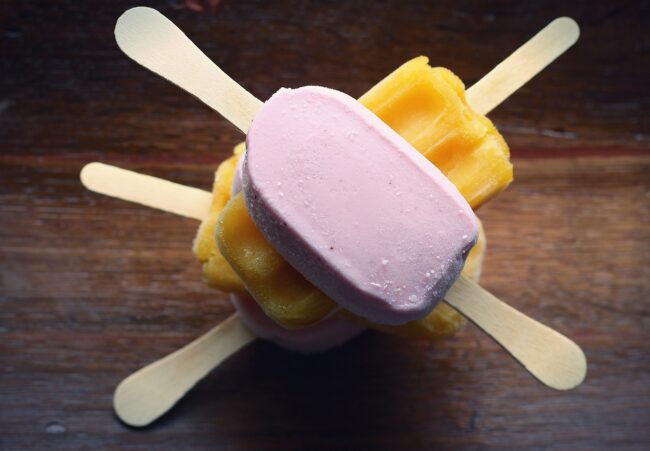Table of Contents
Did your dog eat a popsicle stick? Well, then this article is just for you. As a pet parent, you might feel anxious but knowledge is power and we will explain everything you need to know – including the dangers and treatments a dog might be exposed to after consuming a popsicle stick.
The Risks of Eating a Popsicle Stick
The risks that come with eating a popsicle stick depend on several factors. First off, how much of the stick has been chewed? If the popsicle was slightly chewed without the dog swallowing any splinters, then there’s no cause for worry. However, if you suspect that a few missing pieces have been swallowed by your pet, the consequences can be dire. Sharp edges can cut their mouth, and throat, and even block the digestive tract.
The risks also depend on the size of the dog. If you have a smaller breed, then the dog will have a smaller throat and digestive system. This makes it more difficult for a small breed to pass wood fragments safely.
Poisonous wood
Popsicle sticks are generally not toxic. However, there are various types of wood sticks, and some of them can be dangerous for dogs. For instance, applewood is toxic for dogs.
Unfortunately, it is difficult to tell which type of stick your dog ate. You should keep a close eye on your dog and report any abnormal symptoms to your vet.
Piercing sticks
A common risk associated with eating popsicles is that their sharp edges may pierce the internal organs if not properly chewed. The worst-case scenario may lead to internal bleeding. Look out for blood in your dog’s vomit or feces. Blood is indicative of infection or internal bleeding. Contact your vet immediately in this case.
Dog Ate Popsicle Stick – What To Do Now?
- Call your vet.
- Monitor your dog. Notice if there are any abnormalities.
- Check the feces. This solution may require you to wear gloves and get your hands dirty. Literally! Take the waste in your hand and notice if there are any popsicle fragments. If you notice blood, then there might be an infection.
Typically, an adequately digested popsicle should be excreted within 24-48 hours.
If there are no abnormal symptoms, your veterinarian may recommend giving your pup some bread. Bread sticks to wood fragments and also prevents their sharp edges from harming the digestive tract.
Symptoms to look out for include:
- Lethargy
- Diarrhea
- Vomiting
- Poor posture
- Abdominal pain
- Bloody stools
- Other abnormal behavior
If you see any or all of these symptoms, consult your vet immediately.
How To Stop A Dog From Eating Popsicle Sticks
- Trow all used popsicle sticks away in a dog-proof trash can.
- Secondly, training is essential. You must train your puppy early in life when it is more prone to ingesting harmful objects. This step will prevent problem eating in the future.
- Next, you must also teach your pet not to steal food.
- Provide a healthy diet and snacks that will make them less prone to hunger and snacking on strange things like sticks.
- Keep uneaten ice cream out of your dog’s reach.
Why Do Dogs Eat Sticks?
This is a tough question. It’s difficult to answer why dogs eat certain non-edible items. But in the case of ice cream sticks, they might be after the milky flavor of the ice cream itself. To their amazing noses, the stick still carries this mouth-watering smell long after the wood has dried.
If your dog has chewed on a popsicle stick just once and was fine, then there’s no reason to consider it a bad habit. However, if consuming foreign objects becomes a regular thing, then you should consult a vet.
Other Reasons Dogs Chew Popsicle Sticks
- Toothache: It is possible that your dog is feeling dental discomfort, and it’s chewing on sticks to relieve the pain and discomfort.
- Bad habits: Sometimes, dogs may eat non-edible items out of curiosity or mischievousness. It becomes your responsibility to train your dog and make sure it doesn’t eat unsuitable objects.
- Hunger: Some dogs do not get enough to eat. This behavior may be due to other pups stealing his food. Perhaps, the dog also doesn’t like the brand of food it’s being fed and thus eats less, leading to hunger and foraging.
- Digestive disorder: A dog may be dealing with stomach inflammations by eating sticks. If you notice much abnormal eating on a regular basis, contact your vet.
A Quick Wrap
In summary, sticks that are just chewed and not swallowed in large quantities won’t cause much trouble. A dog’s stomach can even handle a tiny amount of wood. However, when large or sharp pieces are swallowed, the consequences can be negative. If your dog looks sick after eating a popsicle stick, it’s best to take them to the vet as soon as possible.

